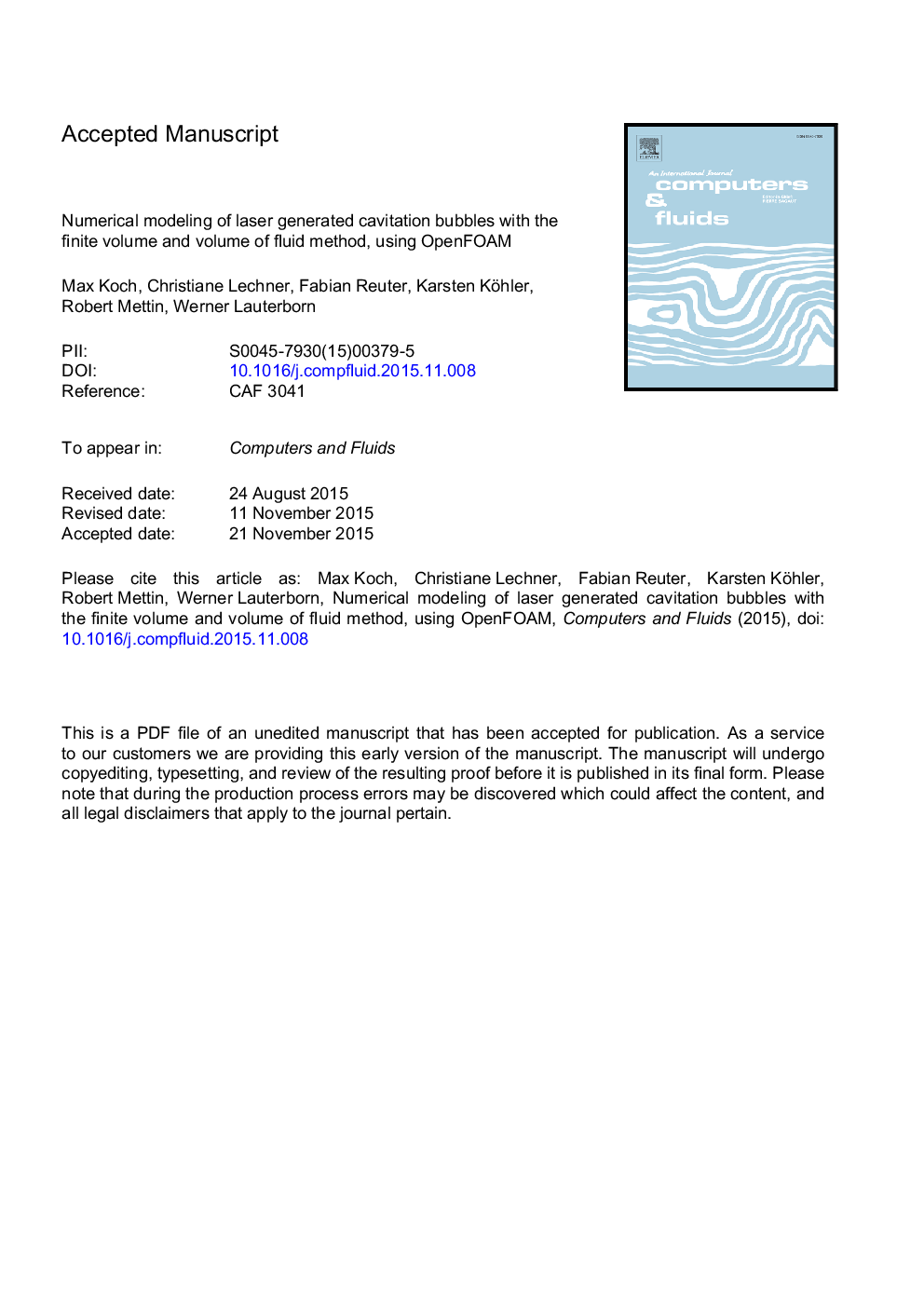| Article ID | Journal | Published Year | Pages | File Type |
|---|---|---|---|---|
| 7156778 | Computers & Fluids | 2016 | 34 Pages |
Abstract
Laser generated cavitation bubbles are numerically modeled with the finite volume method using the open source software package OpenFOAM. The alterations applied to the native code are described and validated by solving the spherical bubble collapse problem and comparing the solution with the Gilmore model and experiments. Problems of spherical stability and their connection with the mesh are discussed. Shock wave emission upon laser bubble generation and bubble collapse is modeled by inserting the Tait equation for the liquid (water) into the code. The results are compared with calculations by Hickling and Plesset and experiments. The calculations are extended to the problem of cavitation bubble collapse in front of a solid boundary.
Keywords
Related Topics
Physical Sciences and Engineering
Engineering
Computational Mechanics
Authors
Max Koch, Christiane Lechner, Fabian Reuter, Karsten Köhler, Robert Mettin, Werner Lauterborn,
